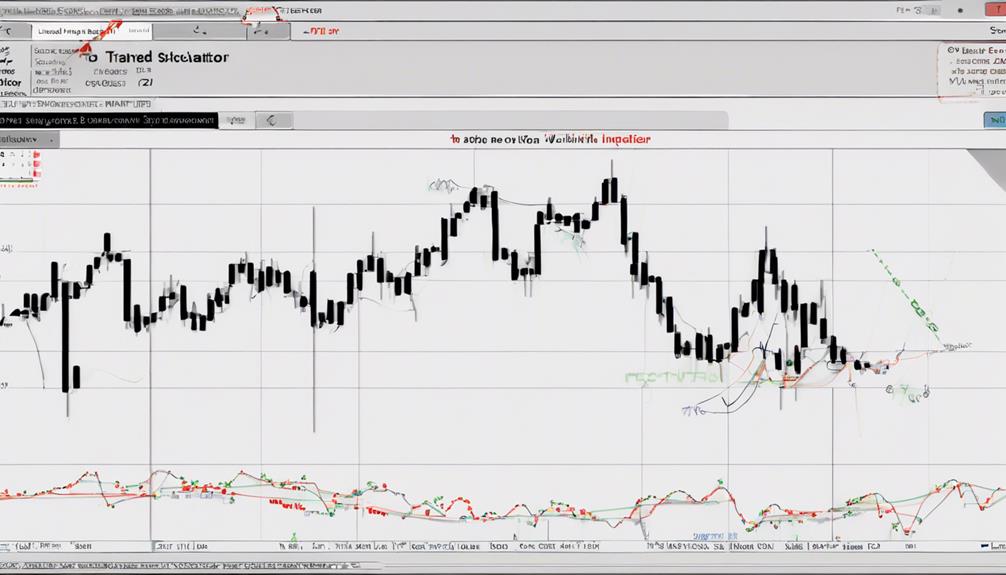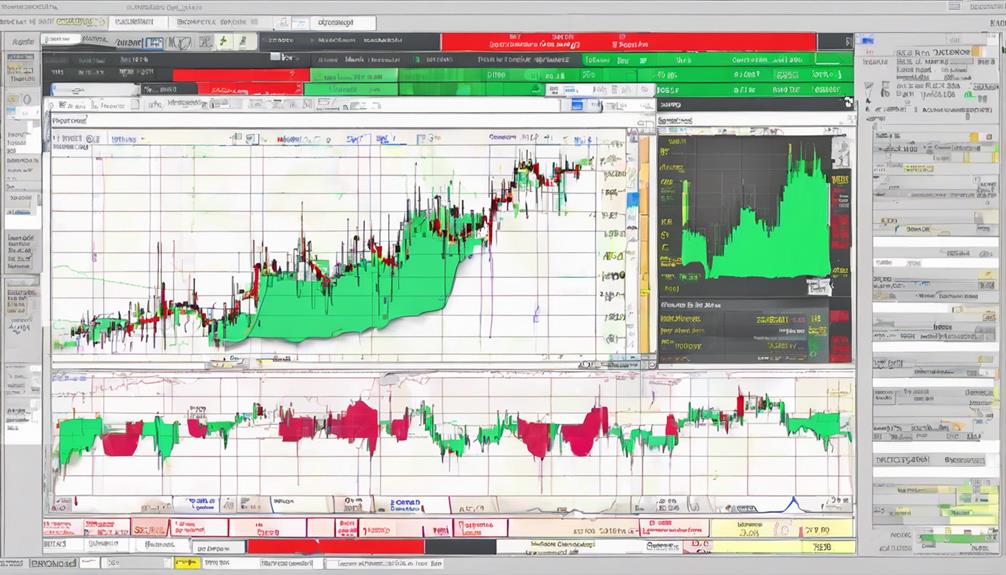You may be surprised to learn that utilizing the Stochastic Oscillator indicator can increase your trading success significantly. Understanding how to effectively interpret its signals could be the key to boosting your trading performance.
By exploring the three best ways to utilize this indicator, you can enhance your trading strategies and potentially achieve more consistent results.
Effective Stochastic Oscillator Indicator Strategies
When implementing effective Stochastic Oscillator Indicator strategies, it's crucial to focus on identifying key market conditions for informed decision-making.
The Stochastic oscillator helps pinpoint overbought and oversold levels, indicating potential reversal points.
By utilizing Stochastic divergence, traders can detect discrepancies between price and the indicator, signaling possible shifts in trend direction.
Moreover, Stochastic crossovers, especially when the %K line crosses the %D line, offer actionable buy or sell signals.
To enhance the robustness of trading decisions, combining the Stochastic with other indicators such as RSI or MACD for confirmation is advisable.
Customizing Stochastic settings to align with your trading style and preferred time frame is essential for optimal performance in navigating the dynamic markets.
Advanced Techniques for Stochastic Oscillator

Combining the Stochastic Oscillator with other technical tools enhances the precision of market analysis for advanced traders seeking strategic insights. By integrating the Stochastic Indicator with Bollinger Bands, traders can identify extreme price movements within a range, offering valuable trading signals.
Additionally, recognizing divergence between price and the Stochastic Indicator can indicate potential trend reversals, aiding advanced analysis. Incorporating Fibonacci retracement levels with the Stochastic can refine entry and exit points, optimizing trade execution.
Moreover, employing multiple time frame analysis with the Stochastic Indicator provides broader confirmation signals for decision-making. Customizing settings on the Stochastic, like adjusting smoothing parameters, allows advanced traders to fine-tune signals and leverage the indicator's momentum effectively, especially in scenarios like bullish divergence.
Maximizing Stochastic Oscillator for Trading

To optimize your trading strategy effectively, harness the full potential of the Stochastic Oscillator by implementing advanced techniques and combining it with complementary indicators. The Stochastic oscillator assists in identifying overbought and oversold conditions, providing valuable entry and exit points.
Enhance its effectiveness by using it in conjunction with indicators like RSI and MACD for confirmation signals, increasing the accuracy of your trades. Adjust the Stochastic settings to fine-tune sensitivity to price movements, ensuring timely responses to market changes.
Additionally, combining the Stochastic with moving average crossovers can offer enhanced trend confirmation. Watch out for Stochastic divergence, as it signals potential trend reversals, providing opportunities for traders to capitalize on market shifts.
Incorporating these strategies can elevate your trading performance when using the Stochastic Oscillator.
How Can Moving Averages Be Used in Conjunction with the Stochastic Oscillator Indicator?
Moving averages can be used in conjunction with the exploring stochastic oscillator oscillators to provide a more comprehensive analysis of market trends. By combining the two indicators, traders can better identify potential buy and sell signals, as well as determine the strength of a trend. This combination can help improve trading strategies and decision-making processes.
Frequently Asked Questions
Which Indicator Pairs Best With the Stochastic Oscillator?
Pair the Stochastic oscillator with complementary indicators like RSI, moving averages, and MACD for robust signal confirmation. By combining these tools, you can enhance your trading decisions and gain a more comprehensive view of market momentum.
How Do You Master a Stochastic Indicator?
To master a Stochastic Indicator, understand its formula with %K and %D lines. Interpret crossovers and divergences for trend changes. Adjust settings for signal accuracy. Backtest signals with historical data. Combine indicators for confirmation. Refine strategies with practice and analysis.
What Is 5 3 3 Stochastic Settings?
In the realm of trading, the 5 3 3 Stochastic setting represents a faster variant of the oscillator, offering swift signals for quick decisions. Its sensitivity to price changes aids in capturing rapid market movements effectively.
What Is the 4 Hour Stochastic Strategy?
To implement the 4-hour Stochastic strategy effectively, analyze price momentum and overbought/oversold conditions on a 4-hour timeframe. This approach captures medium-term trends and potential reversals, striking a balance between intraday trading and trend analysis for swing traders seeking reliable signals.
Conclusion
In conclusion, by incorporating the Stochastic Oscillator indicator into your trading strategy, you can enhance your decision-making process and improve your overall trading performance.
Are you ready to take your trading to the next level by leveraging the power of the Stochastic Oscillator indicator?
Start implementing these effective strategies today and watch your trading success soar.
